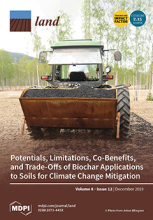Land Library
Welcome to the Land Portal Library. Explore our vast collection of open-access resources (over 74,000) including reports, journal articles, research papers, peer-reviewed publications, legal documents, videos and much more.
/ library resources
Showing items 19 through 25 of 25.Understanding future land-use related water demand is important for planners and resource managers in identifying potential shortages and crafting mitigation strategies. This is especially the case for regions dependent on limited local groundwater supplies.
Introduced as a soil erosion deterrent, salt cedar has become a menace along riverbeds in the desert southwest. Salt cedar replaces native species, permanently altering the structure, composition, function, and natural processes of the landscape.
Restoration depends on purpose and context. At the core it entails innovation to halt ongoing and reverse past degradation. It aims for increased functionality, not necessarily recovering past system states.
Green infrastructure (GI) is a strategic planning approach that can contribute to solutions for ecological, social, and environmental problems. GI also aims to conserve natural and semi-natural landscapes and enhance ecological networks.
Forest conversion to agriculture can induce the loss of hydrologic functions linked to infiltration. Infiltration-friendly agroforestry land uses minimize this loss.
The Re-Greening of the West African Sahel has attracted great interdisciplinary interest since it was originally detected in the mid-2000s. Studies have investigated vegetation patterns at regional scales using a time series of coarse resolution remote sensing analyses.
The restoration of vegetation in abandoned farmlands is an effective approach to control soil erosion on the Chinese Loess Plateau. However, few studies have investigated the effect of natural restoration age on the infiltration patterns and preferential flow in soil layers.




